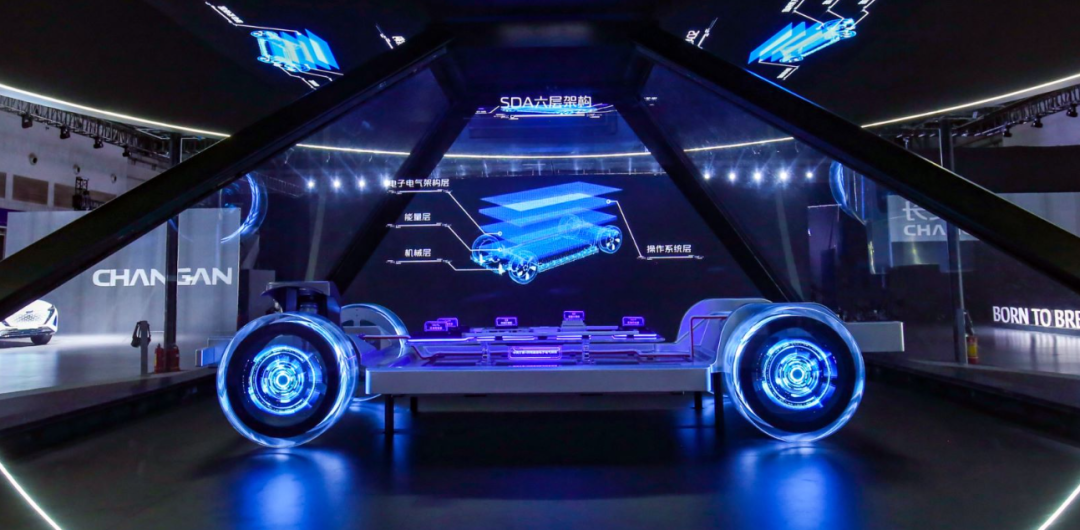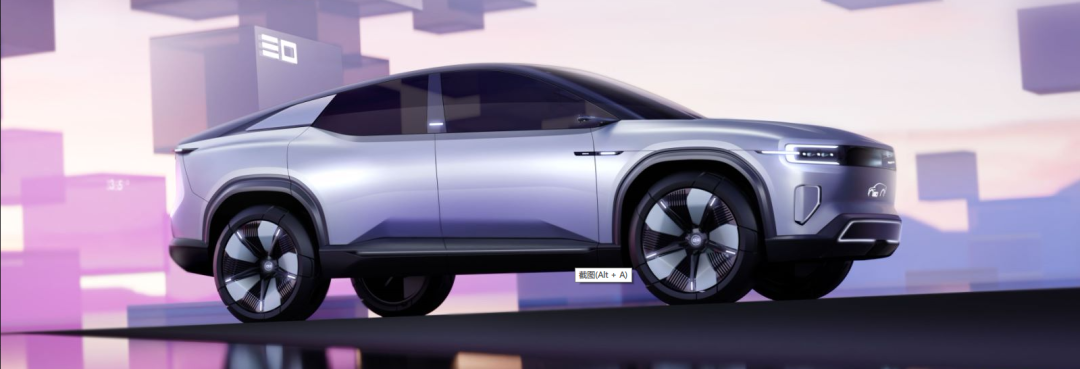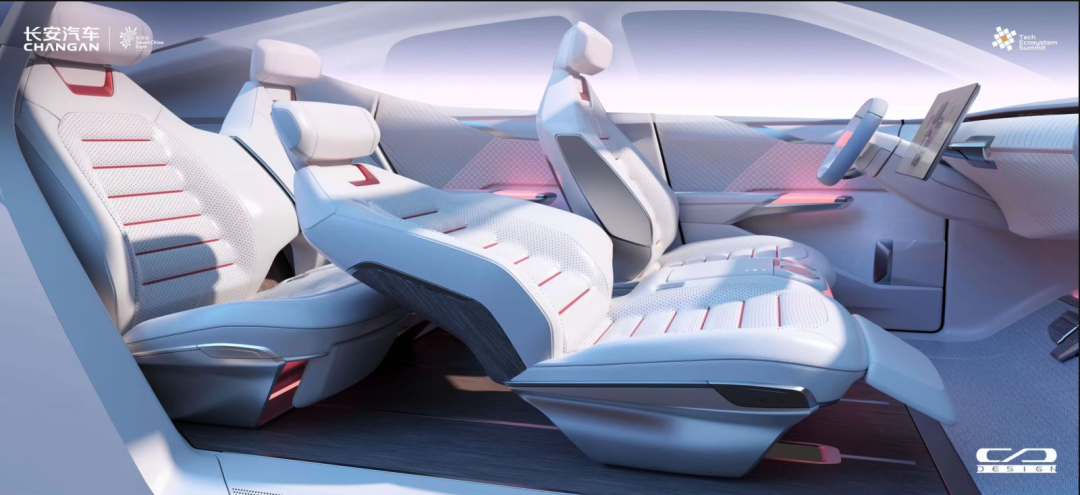Author: Zhu Shiyun
Editor: Zhu Shiyun
The battles in Changan have been going on one after another.
On August 31, Changan Automobile released an important second quarter report: affected by the epidemic and chip shortages, it achieved a non-recurring net profit of 810 million yuan during the quarter, of which independent non-recurring net profit was 861 million yuan, becoming the core profit pillar.
At this moment, Changan has finally ended the difficult transformation that lasted for nearly four years, and ended its profit dependence on joint venture brands. But the battle is not over.
On August 29, Changan Automobile officially unveiled the SDA architecture with the technical features of “hardware pluggable, scenario programmable, ecology on demand and self-evolving system”, and the smart brand “Zhuge Intelligent” developed based on SDA.
At the same time, the first prototype car CD701 that applied the SDA architecture was launched to demonstrate the three core experiences of “interaction, intelligent driving and ecology” under the new “Changan car” concept.
Although the first product launched by Deep Blue, which focuses on multi-power structure, has just begun to be delivered, Changan has quickly launched the second attack: “We will take the ‘Beidou Tianmu’ plan as the main line and launch more than 30 new intelligent connected products one after another by 2025,” said Changan Automobile Chairman Zhu Huarong at the meeting.
“Tianmu falls into Zhuge.” The new energy brand matrix has just landed, and Changan is eager to deeply enter the field of intelligentization.
Whether Changan can seize the initiative in the competition of intelligenceization will largely depend on what the SDA architecture really is and what level it is at?
A centralized computing platform benchmarking Tesla
“Based on the DDS (Data Distribution Service) standard, C2, EDC, and VIU have been tailored and adapted. It is the second car company in the world to mass-produce applications on MCUs.” Zhang Xiaoyu, Vice President of Changan Automobile and Chairman of the company’s scientific and technological association, introduced the middleware layer of the SDA architecture at the conference.
The other car manufacturer that achieved mass production application should be Tesla.

From the design logic, Changan’s SDA architecture is completely consistent with Avita’s CHN technology platform. Both adopt a six-layer architecture distribution: mechanical layer, energy layer, electronic and electrical architecture layer, operating system layer, application software layer, and cloud big data layer.
But in the core electronic and electrical architecture layer (EEA), from the current statement, SDA is more centralized than CHN.
The Avita 11 that applies the CHN architecture adopts the domain control EEA architecture mode of power, intelligent driving, intelligent cabin and body, which is currently the mainstream approach.However, Changan’s SDA will be more like Tesla’s Model Y EEA mode: “a central computing platform consisting of a C2 (central computer) + EDC (experience computer)” plus three VIUs (area controllers), connected by a backbone network of “Ethernet + CANFD” to achieve signal communication.
C2 refers to an intelligent driving computing platform with a computing power of 508 TOPS, while EDC is an intelligent cockpit platform with a graphics computing power of 2000 GFLOPS. Three VIUs are responsible for network management and local device power distribution and control, and have achieved cross-domain integration of 15 controllers for powertrain, chassis, air-conditioning heat management, and body.
Although Changan did not present actual architecture diagrams, it can be inferred from the “central computing platform consisting of” that C2 and EDC will be centralized on a single board like Tesla’s “central computing platform.”
Although this type of computing platform is not a true “central computing platform”, that is, completing all functions of perception and decision-making including the intelligent cockpit and intelligent driving with a single SOC. However, compared with the approach of different domain controllers, such centralization, like that of Tesla and Changan SDA, will further shorten communication lines and enhance responsiveness in real time. Changan officials also stated that the vehicle harness length under the SDA architecture will be reduced by 10%-20%.
However, centralized solutions pose higher challenges to the functional safety of hardware and software, and demand higher real-time accuracy and precision of data distribution.

To meet such demands, Changan SDA’s communication network mainly employs a 100 Mbps Ethernet ring network, and the core controllers are equipped with a 1 Gbps network.
“Meanwhile, by using technologies such as TSN (Time-Sensitive Networking) and ring network redundancy, traditional Ethernet data transmission problems such as disorder and packet loss are solved, and system time synchronization accuracy is less than 1 microsecond. Data loss is zero, and communication recovery within 50 milliseconds after link damage can be realized, and single-point communication faults can be recovered seamlessly” said Zhang Xiaoyu.
Real-Time Operating System + SOA Software and Hardware Decoupling
Changan SDA’s operating system layer also emphasizes real-time performance, employing its self-developed RTDriveOS intelligent driving operating system.
RTOS (Real-Time Operating System) is a real-time operating system. Compared with general time-sharing operating systems like Linux, Windows, and Unix, it strictly allocates CPU time according to priority, and its correctness needs to satisfy both the logical results of system calculation and the time when logic is produced.In other words, when working on intelligent/autonomous driving systems, the focus of the operating system is to send the correct commands to the correct actuator at the correct time. After all, no one wants the vehicle to brake urgently only after a collision has occurred.
According to Zhang Xiaoyu, RTDriveOS consists mainly of a virtualization engine, performance domain, real-time domain, abstraction layer, middleware, etc.
It can simulate multiple CPUs on a single CPU, allowing multiple operating systems to run concurrently on a single platform. Virtualization computational overhead is controlled to less than 3%, achieving secure resource sharing of hardware.
It is compatible with the Linux ecosystem; the system response time is less than 5 microseconds; it masks differences in more than 3 operating system interfaces and more than 50 hardware interfaces. It supports software and hardware decoupling in driving applications, allowing partial hardware plug-and-play replacement.

In the integrated, high real-time hardware and software electronic electrical network architecture of Changan SDA, the middleware and application layer are decoupled into Service Oriented Architecture (SOA).
A vehicle-wide sensing and execution application is abstracted into combinable atomic services, and standardized interfaces are provided for developers to call services in BotStudio at the application layer.
Changan officials said that the SDA architecture has already implemented over 1,000 service interfaces that can be debugged. A standard system that is replicable and portable has been established, and the development efficiency of new functions has been increased by over 30%.
Software and hardware decoupling is the core technology support for software-defined cars. Domestic and foreign car companies, including SAIC, Great Wall, and Geely, are investing in research and development in this field with the hope of mastering the core know-how of intelligence.
The granularity of atomic-level services during SOA will test each company’s forward-looking definition of new car forms and software implementation capability.

CD701 to a certain extent demonstrates Changan’s vision for new forms of vehicles under “software-defined cars.”
CD701 divides the vehicle space into a front cabin, a rear cabin, and an extended cabin to create a spatial pattern of “One Room,” “One Hall,” and “One Terrace.”「One Room」 is a smart mobile space deeply integrated with users’ driving, resting, and working habits; 「One Hall」 can convert two benches layout into a cinema mode, achieve zero gravity relaxation seating and envelop users in mild light colors to enjoy thorough relaxation and leisure; 「One Terrace」 can provide various outdoor leisure scene combinations and changes by linking with external spaces such as the car roof and rear, and supporting ecological function module retrofitting and iterative services, users can turn it into a bed car, tabletop game area, nightclub, and more.
Cloud Computing Center + Hardware Universal Platform
“Changan Automobile’s SDA software-driven architecture has achieved” three major goals”: centralized electrical and electronic architecture, service-oriented software architecture, and standardized and abstracted hardware architecture,” said Wang Jun, President of Changan Automobile, at the press conference. “In the future, the SDA architecture will also realize “two major expectations”: continuous services throughout the entire life cycle and self-evolution of endpoint-cloud integration.”

Specifically, the whole life cycle service refers to the implementation of new automobile business models based on smart cars, including content operations, proactive services, and other digital products that span the entire life cycle of vehicles from “buy, sell, use, and repair”.
Endpoint-Cloud integration refers to the joint computing power of the car side and cloud side. Changan envisions that under a standardized architecture, a large-scale car-side computing power can form a computing pool, making it possible for car enterprises to become computing power suppliers at the same time. On the other hand, cloud computing will achieve the iterative updating of various algorithms and applications through car-side data driving.
“Continuous service and self-evolution will be built on the highly universal hardware platform of the car side and the data center of the cloud side, which are the two major “infrastructure” elements,” Wang said.
Changan plans to promote the future hardware universality rate of SDA in the mechanical and energy layers to over 80%, while platformization of electrical and electronic architecture, operating systems, application software, and cloud-based big data layers will reach over 90%.
“A highly universal hardware platform not only helps car companies achieve economies of scale but also, in the era of intelligence, means that vehicles collect more standard data both inside and outside the car, forming a “data scale advantage”,” Wang explained.
Changan is building a leading computing center in the industry with the ability to connect millions of vehicles and process up to 10 billion pieces of data per day.
Changan’s Future Supported by SDA
“The greatest achievement in the past five years has been the SDA architecture,” said Deng Chenghao, CEO of Changan New Energy Technology Co., Ltd., at the Changan New Energy Technology Sharing Conference in April. SDA includes EPA0, EPA1, and EPA2 three vehicle platform models.The already-launched Shenlan 03 and the upcoming cross-border SUV C673 to be released in Q1 of next year are both from the EPA1 platform; Nuoyumi uses the EPA0 platform; it is yet unknown whether the new car CD701, which is between a pickup truck and an SUV, is from the EPA2 platform.
According to Deng Chenghao, EPA1 is the core product of Changan New Energy and the main force of Shenlan, aiming at the new energy market with a price range of 150,000-300,000 yuan. Currently, Shenlan has orders for 40,000 vehicles in hand.
According to Changan’s plan, more than 30 intelligent internet-connected products will be launched before 2025. Therefore, Changan continues to invest in the “Shangri-La and Beidou Tianju” plan internally.
Since the start of the third venture in 2017, Changan’s independent sector has accumulated RMB 23.172 billion in R&D investment. In H1 2022, the R&D investment in the independent sector (excluding new energy) was RMB 2.535 billion (cost rate 76%), an increase of 29.34% YoY. Among them, the total investment in software and intelligence was RMB 331 million, an increase of 125% YoY, accounting for 13.1% of the total R&D investment, supporting the landing of APA7.0, SDA architecture, and so on.
However, compared with the investment of other independent top and independent joint venture automakers, which can reach hundreds of billions of yuan in ten years, the scale of R&D investment is not very large. On the other hand, the output of its intelligent products comes from Changan’s open attitude.
Changan is one of the earliest Chinese auto companies to adopt the Horizon Journey 3, and the intelligent driving capabilities of the UNI-T are established through Changan’s deep cooperation with Horizon. Subsequently, the intelligent driving capabilities of the UNI-V are largely based on Changan’s independent capability.
In the first half of the year, the sales ratio of high-priced UNI series and CS75\55 series in Changan’s independent brand increased by 10%, driving the overall price increase of Changan passenger cars by 3%, with models priced above 100,000 yuan accounting for 70%.
Currently, the system used in the intelligent cockpit under the SDA architecture is Wutong Carlink, which is a cooperation product between Changan and Tencent.
As one of the three seats of Huawei Hi Mode, Avita is also backed by Ningde Times. At the end of this year, Avita’s sales and service network will cover 110 cities across the country, and Huawei’s stores will also enter Avita’s sales channel.
Changan hopes to achieve a total sales volume of 3 million vehicles for its independent brand by 2025, with the proportion of new energy vehicles reaching 35% (1.05 million vehicles), of which Shenlan’s 5 models will reach a sales volume of 700,000 vehicles; by 2030, the overall sales volume will reach 4.5 million vehicles, with the proportion of new energy vehicles reaching 60% (2.7 million vehicles), and Shenlan will have 7 products and a scale of 1 million vehicles.Sorry, Markdown doesn’t support translating Chinese text to English text without converting the content. Please provide the Chinese text that you want me to translate to English without using any Markdown formatting.
This article is a translation by ChatGPT of a Chinese report from 42HOW. If you have any questions about it, please email bd@42how.com.
